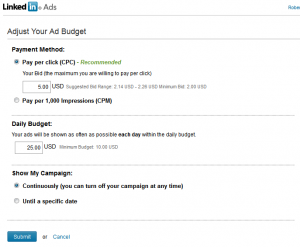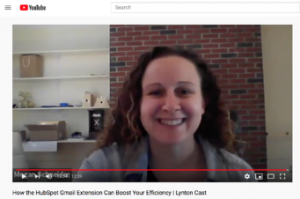
I wrote this article (originally called Search Engine Optimization For Blogs) in 2004 and when I revisited it, I was pleasantly surprised to find that it was not as outdated as I feared.
A lot of these tips are still valid, but I have added a few new ones and updated it to reflect the new ranking factors of social media and mobile usage. So here are my 10 search engine optimization (SEO) tips for blogs – updated for 2015.
Blogging software is really a simple Content Management System (CMS) that easily adds new pages and integrates them into your site’s navigational structure and linkage.
Blogs and blog posts are naturally search engine friendly because they are text-rich, link-rich, frequently-updated webpages that use stylesheets or CSS, and have very little extraneous HTML.
Optimizing a blog is very similar to optimizing a website, and optimizing a blog post similar to optimizing a web page. But depending on the blogging service or software you use, the results may look somewhat different.
If you follow some simple rules for search engine optimization, your blog will rank much higher than static website pages in the search engine results pages.
Here are 10 of my favourite tips to get your blog posts ranked for the keywords of your choice.
1. Use your primary keyword in your blog domain
This is still one of the most important ranking factors. Whether you purchase a separate domain (recommended) for your blog, or host it on a blogging service or a subdomain of your own site, try to ensure that your URL contains the primary keyword you want to optimize for.
For example, if you want your blog to get found for the keyword “seo” get a domain with the keyword “seo”, or use the keyword in a subdomain as in http://www.yoursite.com/seo/.
Getting a domain name with your own name might make sense for personal branding, especially if yours is a personal blog. But if you’re blogging for business reasons and want targeted traffic to flow your way, primary keywords in your domain or subdomain are a move in the right direction.
2. Optimize your permalinks
If your primary key phrase is “blog seo” make sure that the word blog, or seo, or both, appear in your blog headers (the H1 or H2 tags) as well as the title of each of your posts.
Most blogging software will take the keywords in your post title and put them into the file name of the permalink it creates.
For example, if you have a blog on Blogger and title your post “Search Engine Optimization For Blogs”, Blogger will automatically create a page with your post and name the file “search-engine-optimization-for-blogs.html” or something similar.
In WordPress, it is possible to achieve the same results by selecting the “Post Name” option in the Permalinks settings as I’ve done for this blog here.
3. Use your long-tail keywords in the body of your post
If you want to get listed for long-tail keywords use them infrequently in the body of your post and pepper your blog titles or links with them as appropriate. Don’t overdo this or your posts will end up sounding unnatural and spammy to readers.
Write your blog post for your readers first and then add keywords in suitable places. If your post is unreadable because of keyword spam, it will not be of interest to either readers or search engines.
4. Mobilize your blog
With Google’s recent “Mobilegeddon” update, you must ensure that your blog is easily accessible and readable on all mobile devices. The best way to do this is by using a responsive theme that adapts your blog design to the device it is being viewed on.
WordPress has thousands of free, responsive themes available that you can download and install right now. There’s really no excuse not to make this change when a growing percentage of internet users now access the web from their mobile or tablet.
5. Create a Google Sitemap
Set up your blog so that the side navigation bar is present on all pages. Make sure your archives and previous posts are accessible from all pages of your blog so they get spidered easily.
You can take steps to ensure that all your pages get spidered by creating a Google Sitemap that lists all the pages and posts of your blog. WordPress has free plugins that can easily do this, but make sure that your Google sitemap is accessible from every page of your blog.
6. Get backlinks from other blogs or websites
The best way to get backlinks from other blogs and from social media sites is to write posts that are engaging and worth sharing. But, you can also use the methods below to build your links and boost your visibility.
- Submitting to Blog Search Engines and Directories:
Submitting your blog and RSS feed to blog search engines and directories is a good way to get high-quality links back to your blog.
Here is the best list I’ve found of places to submit your feed or blog. (This list was active in 2004 and, amazingly, it still is today!)
Robin Good’s RSSTop55: Best Blog Directory And RSS Submission Sites
If you know of any newer resources better than this one, do share them in the comments below.
- Comment on other blogs:
You can also get back links to your blog by posting legitimate comments in response to posts on other blogs. With plugins such as CommentLuv, these backlinks are automated.
Of course, the “no follow” tag ensures that you will get little juice from such backlinks, except for getting your blog seen by other commentators.
7. Update frequently
There’s no better fodder for search engine spiders than fresh content. According to a study by Hubspot, the more blog posts companies published per month, the more traffic they saw on their website.
They also found that companies that published 16+ blog posts per month got almost 3.5X more traffic than companies that published between 0 to 4 monthly posts.
Ideally, you should test your audience’s tolerance for publishing more frequently. If the rate of unsubscribes increase when you publish more often, you might want to scale it down and find a happy medium that is right for both, you and your readers.
8. Stay put
Once you create your blog, stick to the same domain for as long as you continue to publish. You could end up losing a lot of your organic traffic, your readers and all your search engine listings if you decide to move or change your domain and URLs.
9. Grow your social media community
Social shares are a huge SEO ranking factor in 2015, so getting more shares and Retweets on social media networks is never a bad thing for your SEO efforts.
Build communities on the big three networks – Facebook, Twitter (the best networks for content sharing) and LinkedIn. If you publish content in multiple formats (images, infographics, videos, PDFs), you should expand your list of networks to include Pinterest, YouTube, Vine, and Visual.ly.
Engage your social community by sharing third-party content as well as your own blog content (we recommend a ratio of 80:20 for third-party versus your own content) so that your community knows that you’re interested in sharing great content, and not just plugging your own.
10. Build a mailing list
This is not strictly an SEO tip, but it ensures that you get repeat traffic to your blog, by capturing emails and sending out regular blog updates to your subscribers. The amount of time that visitors spend on your blog is one of today’s SEO ranking factors, because it tells Google that your blog is useful to your readers.
Even using a free service like Feedburner to capture subscribers’ emails is better than not having a subscribe box at all. If you want to get more professional, you can use Mailchimp or, my personal favourite, Aweber, to capture and follow up with your subscribers. All these services can be set up to send an automatic update to your subscribers every time you post on your blog.
Post consistently using all the rules outlined above and there’s no reason why your blog will not get top rankings for your long-tail keywords.
(256)










